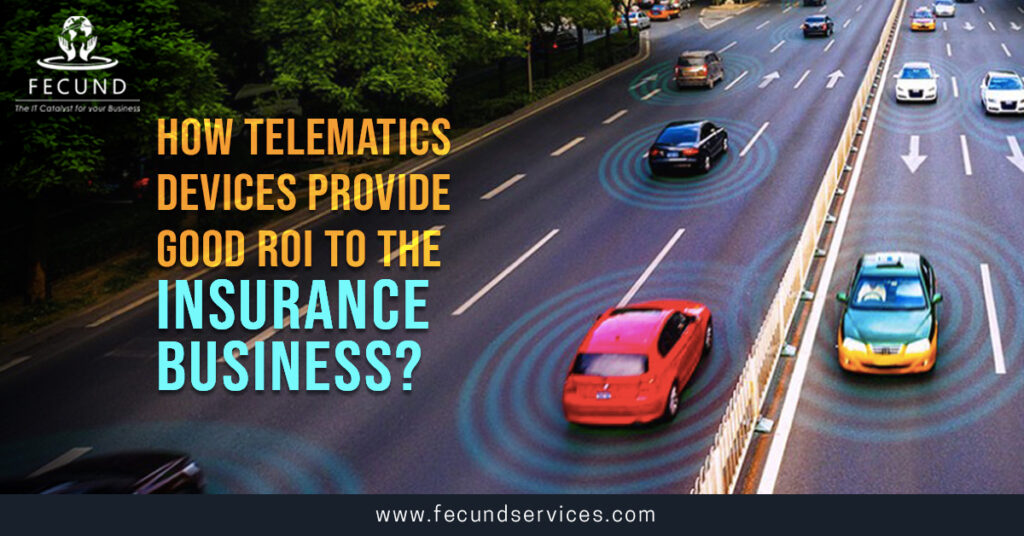
How telematics devices provide good ROI to the insurance business?
Telematic is the device usually provided by the insurance companies to the customer. The device consists of telematic software focus on the collection, transmission, and processing of the data. The vehicles like cars, trucks, trailers and other vehicles used for commercial purposes are implemented with a telematics device. Telematics collects the information either using the aftermarket sensor or factory build solutions. The collected data may include GPS vehicle location, driver’s route choices, driving behavior, traveled distance, driving speed, harsh break, turning speed, engine status, and reports on travel history. Telematic also collect information relates to connected car features that include live weather-condition, traffic, and parking information. All these data are transmitted to the cloud where it is translated and transmitted in real-time data and viewed on the mobile app, website, or dashboard.
What is telematics?
In the broad sense, telematics is the combination of two scientific areas: Telecommunication and Informatics.
1. Telecommunication: it is the branch of technology that includes phone lines and cables.
2. Informatics: it includes systems like a computer.
There are different types of telematics devices consist of various systems and software. It allows the device to collect information from the device and send it for analysis.
When telematics was first introduced many insurers were concern about investing in the technology. Some insurers were concern with data management and driver’s reaction toward the ‘Big brother’ feeling of constantly being watched. However, over the past years, telematics has been used in commercial trucking and fleet management industries.
Trucking and fleet management companies embrace telematics.
Fleet industry leaders have started realizing the significance of telematic devices. They utilize this technology to understand the risk areas which need to be improved. Telematics helps the fleet industry to enhance driver behavior and protect them from accidents. For example, When drivers know that they are being watched, it positively impacts driver behavior. In real-time, telematics regularly informs the driver about the best route, traffic, weather condition, and prevent accidents. They are automatically encouraged to have better driving practices. Telematic acts as a safety program that helps the driver make informed decisions. It helps to reward good drivers and encourage them to work more efficiently.
Telematic also elevate operational efficiency by radically improving the visibility into the operations system with real-time data. These uncover new ways to save time, money, and life. For example, Fleet industry managers and operators can check the vehicle condition before its use. It stops delays in product delivery and prevents potential damage. They can use telematics devices to understand vehicle situations, engine status, speed limit, maintenance requirements, emergency contacts, and more.
Telematic and insurance
Telematics works as a tool for the underwriters and claim processors.
Firstly, telematics is used by the insurance industry for the analysis of risk by underwriters evaluating premiums and, secondly, analysis of accident-related data when resolving claims.
The analytics reports from the telematics can help underwriter brokers and agents. Underwriter can understand the driver’s claims history, no claim bonus, and distance travel to provide pay-as-you-drive choice. They can paint a more accurate picture of the risk profile of the customer. Telematics helped to validate the profile and enabled insurance carriers to provide reliable solutions and support.
The telematics data can help the insurance leader to identify the new product opportunity. It also helps to improve customer service by highlighting the pain points. Marketing, sales, operation, and other management areas can use this data for improving the insurance business.
In the insurance industry, less the customer’s problem more the growth of the business is viewed. Telematics helps to minimize the number of insurance claims by protecting customers from problems that include theft, accidents, product or service delay, and cameras from telematics have saved lives. Telematics helps the insurance business and its customers save money on insurance premiums by encouraging safe driving and maintain long-term relations with the customers.
Telematics also helps insurance companies by detecting fraud claims by displaying vehicle history and approve valid claims only. During the current time of the COVID-19 pandemic, when some non-essential vehicles were taken off the road, telematic assists verify profiles as insureds were seeking credits for risk reduction.
Conclusion:
Telematics not only improved the fleet industry operation but also improved the insurance business functionality too. The ROI has increased for the insurance business by the implementation of telematics software and systems.




Post a comment